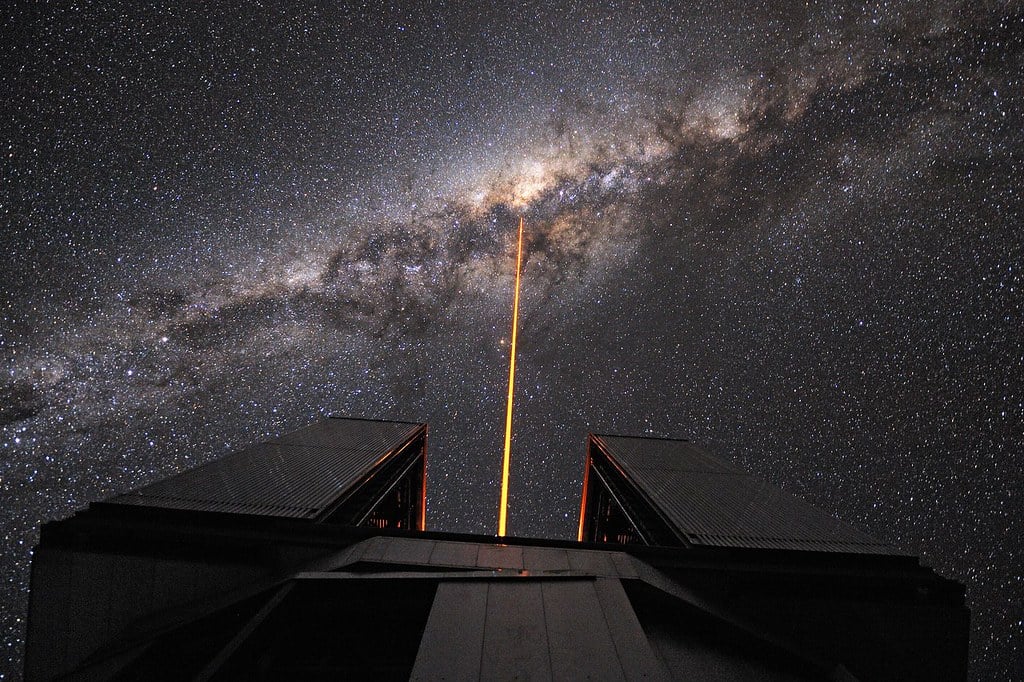
More than 200 RR Lyrae stars—distant variable stars—have been found by astronomers in the Milky Way‘s stellar halo. Over a million light-years separate us from the furthest of these stars. This is roughly half the distance to our nearest galactic neighbor, Andromeda, which is roughly 2.5 million light-years away.
RR Lyrae stars, with their distinctive pulsations and luminosity, are highly accurate “standard candles” for determining interstellar distances. With these updated data, scientists were able to map the Milky Way’s halo to its furthest extremities.
According to Raja GuhaThakurta, professor and head of astronomy and astrophysics at UC Santa Cruz (UCSC), “this study is redefining what constitutes the outer limits of our galaxy. Our galaxy and Andromeda are both so big. There’s hardly any space between the two galaxies.”
Stellar halo component of our galaxy
The disk of our galaxy is only approximately a hundred thousand light-years across, but the star halo is substantially larger, as stated by GuhaThakurta. The arm of the disk in which our solar system is located is a spiral.
There is a central bulge in the disk, and the halo, which includes the earliest stars in the galaxy, stretches outwards from the bulge for hundreds of thousands of light-years in all directions.
Halo research is challenging because the universe’s edges are so far away, GuhaThakurta points out. While the stellar concentrations in the disk and the bulge are quite high, the halo is dominated by dark matter and comprises the vast majority of the galaxy’s material.
Astronomers find the most distant stars in our galaxy halfway to Andromeda…Astronomers have discovered more than 200 distant variable stars known as RR Lyrae stars in the Milky Way’s stellar halo. The most distant of these stars is more than a million light years from Earth. pic.twitter.com/pSROVdYxjG
— ASSOCIATION OF BANGALORE AMATEUR ASTRONOMERS(ABAA) (@abaaonline) January 10, 2023
Yuting Feng, a Ph.D. student at UCSC who is collaborating with GuhaThakurta, presented new research in two lectures on January 9th and January 11th at the American Astronomical Society meeting in Seattle.
Feng claims that prior modeling studies had shown the star halo should stretch out to around three hundred kiloparsecs, or one million light years, from the galactic center.
One kiloparsec is equal to 3,260 light-years, the standard unit of measurement for intergalactic distances used by astronomers. Feng and his team found 208 RR Lyrae stars at distances between 20 and 320 kiloparsecs.
To accurately determine distances, “we were able to use these variable stars as reliable tracers,” Feng said. “Our observations confirm the theoretical estimates of the size of the halo, so that’s an important result.”
Study of a cluster of galaxies
The Next Generation Virgo Cluster Survey (NGVS) is a program that uses the Canada-France-Hawaii Telescope (CFHT) to study a cluster of galaxies far from our own Milky Way.
Due to the survey’s lack of sensitivity to RR Lyrae stars, the team had to manually extract these sources from the data. The enormous elliptical galaxy Messier 87—also known as M87—is a member of the Virgo Cluster, a vast galactic group.
“To get a deep exposure of M87 and the galaxies around it, the telescope also captured the foreground stars in the same field, so the data we used is sort of a by-product of that survey,” Feng explained.
GuhaThakurta claims that the high quality of the NGVS data was crucial to the team’s ability to characterize RR Lyrae as precisely and accurately as possible from their vantage point. The RR Lyrae are ancient stars that, due to their unique physical characteristics, undergo a periodic cycle of growth and shrinking.
See all the latest news from Greece and the world at Greekreporter.com. Contact our newsroom to report an update or send your story, photos and videos. Follow GR on Google News and subscribe here to our daily email!



